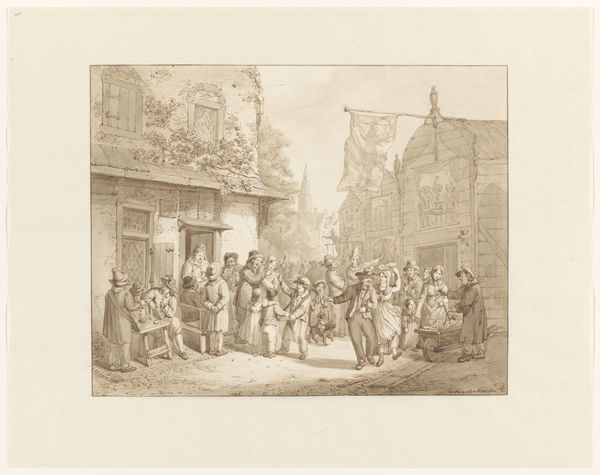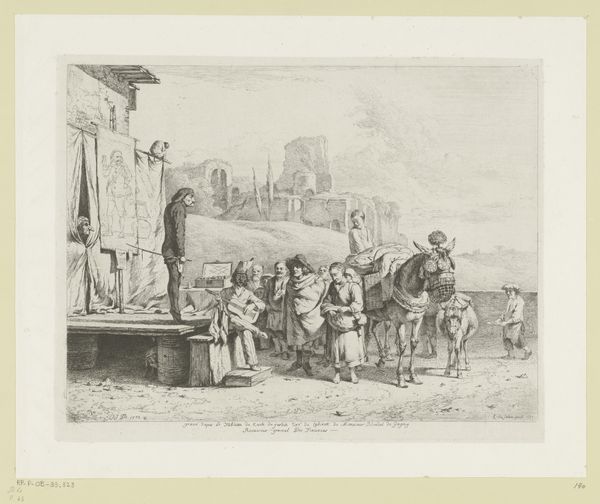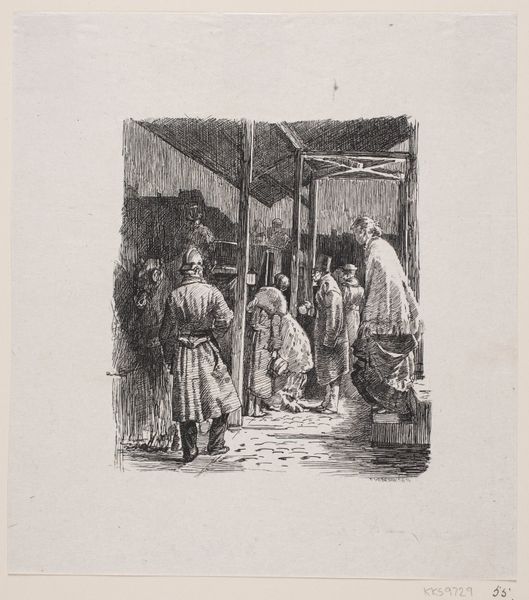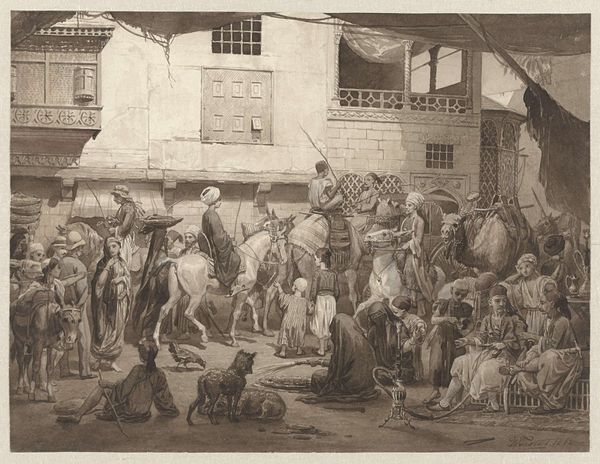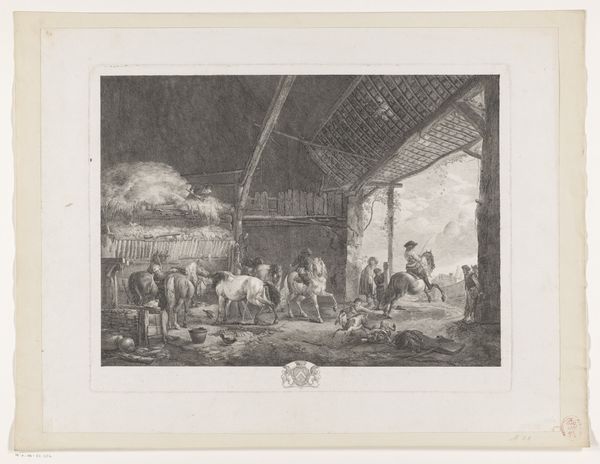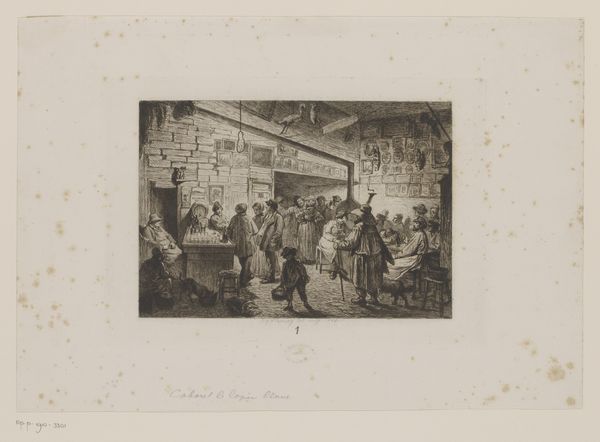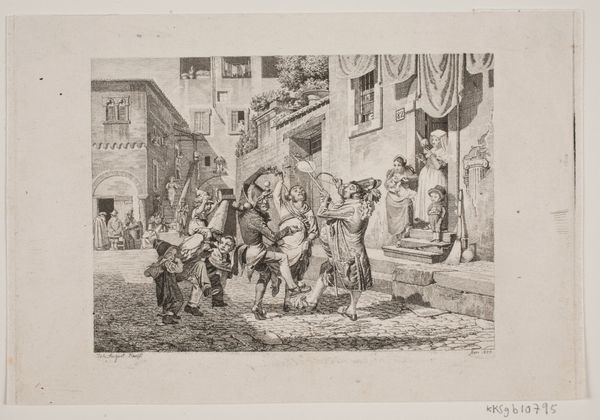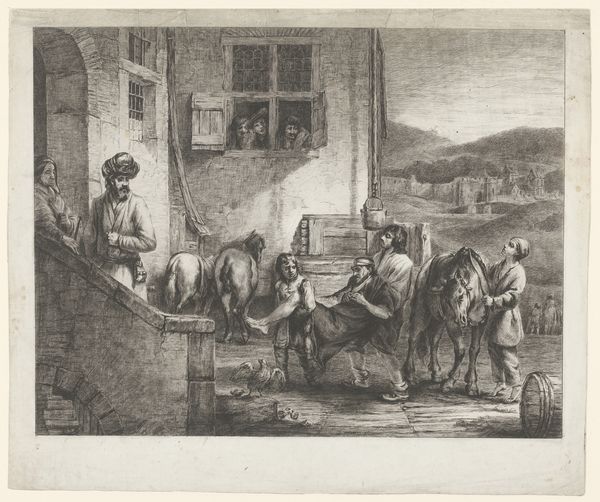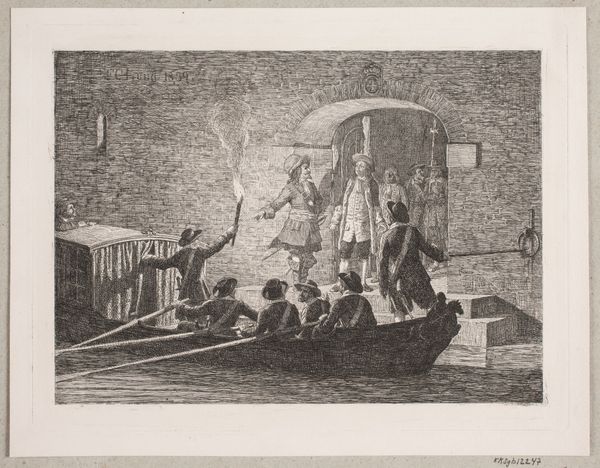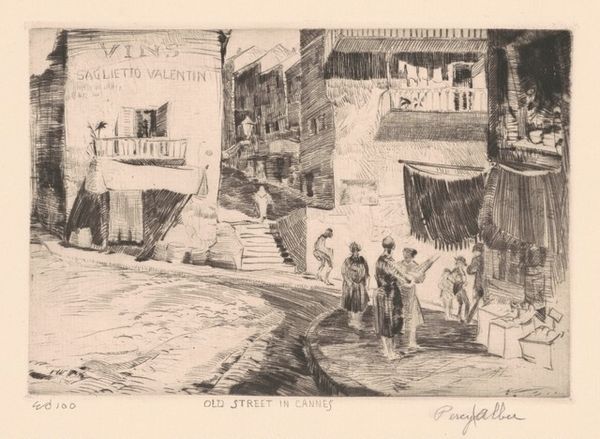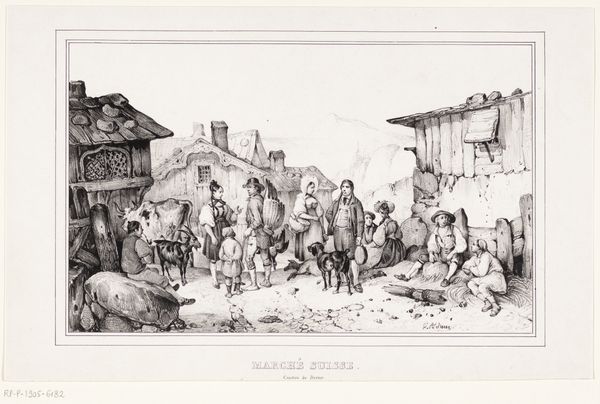
print, engraving
#
medieval
#
narrative-art
# print
#
old engraving style
#
cityscape
#
genre-painting
#
engraving
Dimensions: height 166 mm, width 264 mm
Copyright: Rijks Museum: Open Domain
Editor: We're looking at "Ridders op een markt," or "Knights at a Market," an engraving from sometime between 1832 and 1900 by Adolphe François Pannemaker, housed in the Rijksmuseum. It feels like stepping into a storybook, all these people bustling about, knights standing amongst them. How do you interpret this work within its historical context? Curator: This engraving offers us a glimpse into the romanticization of the medieval period during the 19th century. Genre scenes like these, especially as prints, democratized history painting, bringing images of knights and bustling market life to a wider audience beyond the aristocratic elite. It’s not necessarily about historical accuracy, but rather tapping into a sense of idealized past. Do you notice any elements of fantasy within this realistic scene? Editor: I suppose the very presence of fully armored knights mingling casually amidst common folk feels a bit staged, like a historical reenactment rather than daily life. Curator: Precisely. This idealized version of the medieval world reflects specific socio-political interests. Consider the rise of nationalism in the 19th century. Images like these fostered a sense of national identity rooted in a glorified past. The image normalizes ideas around hierarchy. Think about the function of the Rijksmuseum itself, built in this period: to tell a particular national story, shaping collective memory through selective historical representation. Who gets to write history and what purpose does it serve? Editor: That makes so much sense! It's more than just a snapshot of a market; it's a carefully constructed narrative about power, history, and national identity being made accessible for a large audience. Curator: Exactly. Engravings such as this one served a vital public function in disseminating ideas and shaping public perception. Reflecting on this teaches us the importance of considering context and institutional power when we engage with artworks. Editor: I hadn't thought about how prints themselves can be powerful tools for shaping cultural understanding. It definitely adds layers to how I appreciate and interpret this image.
Comments
No comments
Be the first to comment and join the conversation on the ultimate creative platform.

